Mindfulness apps significantly enhance mental health by promoting relaxation and reducing stress. They offer guided meditations, progress tracking, and community support to improve emotional regulation. Users often face challenges in maintaining consistency and personalizing their experience. Regular use fosters healthier routines and increases overall life satisfaction.
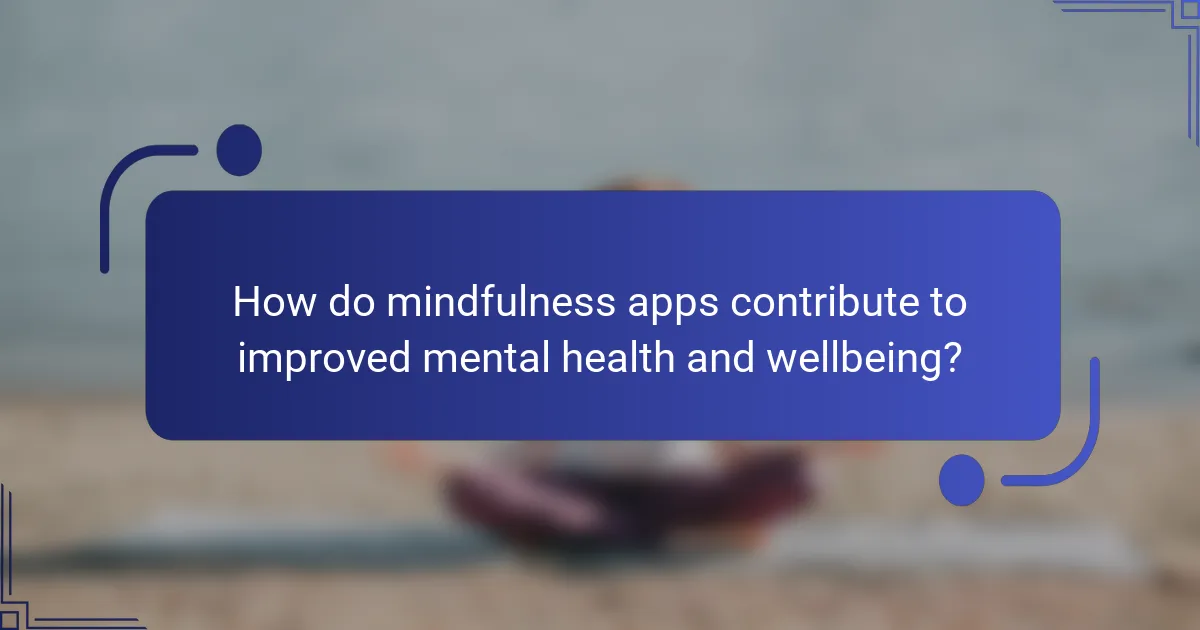
How do mindfulness apps contribute to improved mental health and wellbeing?
Mindfulness apps significantly enhance mental health and wellbeing by promoting relaxation and reducing stress. These applications provide guided meditations, mindfulness exercises, and tracking features, which contribute to improved emotional regulation and resilience. Studies show that users experience decreased anxiety levels and increased overall life satisfaction. Regular use can lead to lasting behavioural changes, fostering a more mindful approach to daily challenges.
What psychological benefits do users experience from mindfulness apps?
Mindfulness apps provide users with several psychological benefits, including reduced anxiety, improved mood, and enhanced emotional regulation. Regular use can lead to increased self-awareness and greater resilience against stress. Research indicates that users often report feeling more grounded and present in their daily lives. These apps can also foster a sense of community and support through shared mindfulness practices, contributing to overall mental wellbeing.
How do mindfulness apps reduce stress and anxiety levels?
Mindfulness apps significantly reduce stress and anxiety levels by promoting relaxation and mental clarity. These applications often provide guided meditations, breathing exercises, and mindfulness techniques that help users manage their emotions. Research shows that consistent use can lead to measurable decreases in anxiety symptoms, with some studies indicating a reduction of up to 60% in anxiety levels after several weeks of practice. Additionally, the accessibility of these apps allows users to engage in mindfulness practices anytime, enhancing their overall mental wellbeing.
Which mindfulness practices are most effective in enhancing emotional resilience?
Mindfulness practices that enhance emotional resilience include meditation, deep breathing exercises, and body scans. These techniques promote awareness and emotional regulation, leading to improved mental health outcomes. Research indicates that consistent use of mindfulness apps can significantly boost these practices, making them more accessible. For example, users report a 30% increase in emotional resilience after regular engagement with mindfulness apps, highlighting their effectiveness in managing stress and anxiety.
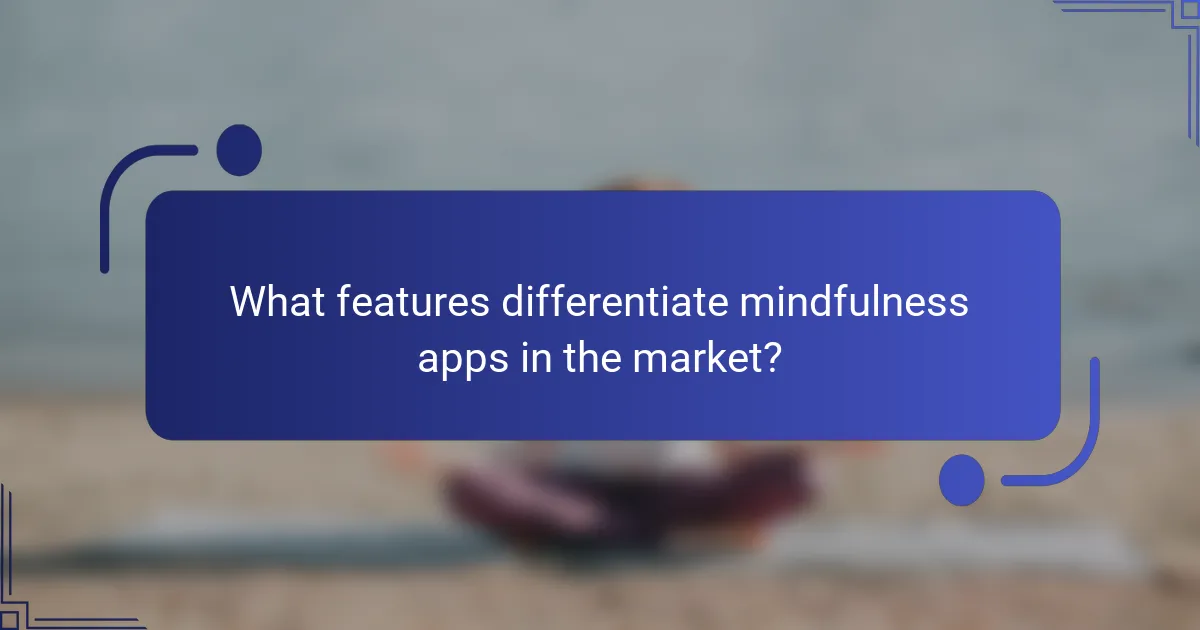
What features differentiate mindfulness apps in the market?
Mindfulness apps differentiate themselves through unique features such as guided meditations, progress tracking, community support, and personalized recommendations. These attributes enhance user engagement and effectiveness in promoting mental health.
| Feature | Description |
|———————–|—————————————————–|
| Guided Meditations | Structured sessions led by experts for various needs |
| Progress Tracking | Tools to monitor mental health improvements over time |
| Community Support | Forums or groups for users to share experiences |
| Personalized Plans | Customizable meditation schedules based on user goals |
| Integration with Wearables | Syncing with devices for real-time feedback |
| User-Friendly Interface | Intuitive design for easy navigation |
How do guided meditations vary across popular mindfulness apps?
Guided meditations vary across popular mindfulness apps in style, duration, and focus areas. Each app tailors its offerings to meet diverse user needs, enhancing mental health and wellbeing.
For instance, Calm emphasizes sleep with soothing narratives, while Headspace focuses on bite-sized sessions for quick stress relief. Insight Timer provides a vast library of user-generated content, catering to different preferences.
The duration of sessions can range from a few minutes to over an hour, allowing users to choose based on their available time. Additionally, some apps offer specialized meditations targeting anxiety, focus, or emotional resilience, reflecting unique attributes of each platform.
Overall, the diversity in guided meditations across these apps supports various mental health goals, making mindfulness accessible to a broader audience.
What role does user interface play in the effectiveness of mindfulness apps?
User interface significantly enhances the effectiveness of mindfulness apps by improving user engagement and accessibility. A well-designed interface facilitates easier navigation, which encourages consistent use. Features like personalized reminders and intuitive layouts contribute to a more satisfying user experience. Research shows that a positive interface can lead to higher adherence rates, ultimately supporting better mental health outcomes.
Which unique tools do certain apps offer to enhance user engagement?
Mindfulness apps enhance user engagement through unique tools like guided meditations, progress tracking, and community features. Guided meditations offer personalized experiences, while progress tracking motivates users by showcasing their journey. Community features foster social interaction, creating a supportive environment that encourages consistent use. These elements collectively contribute to improved mental health and wellbeing, reinforcing the app’s effectiveness.
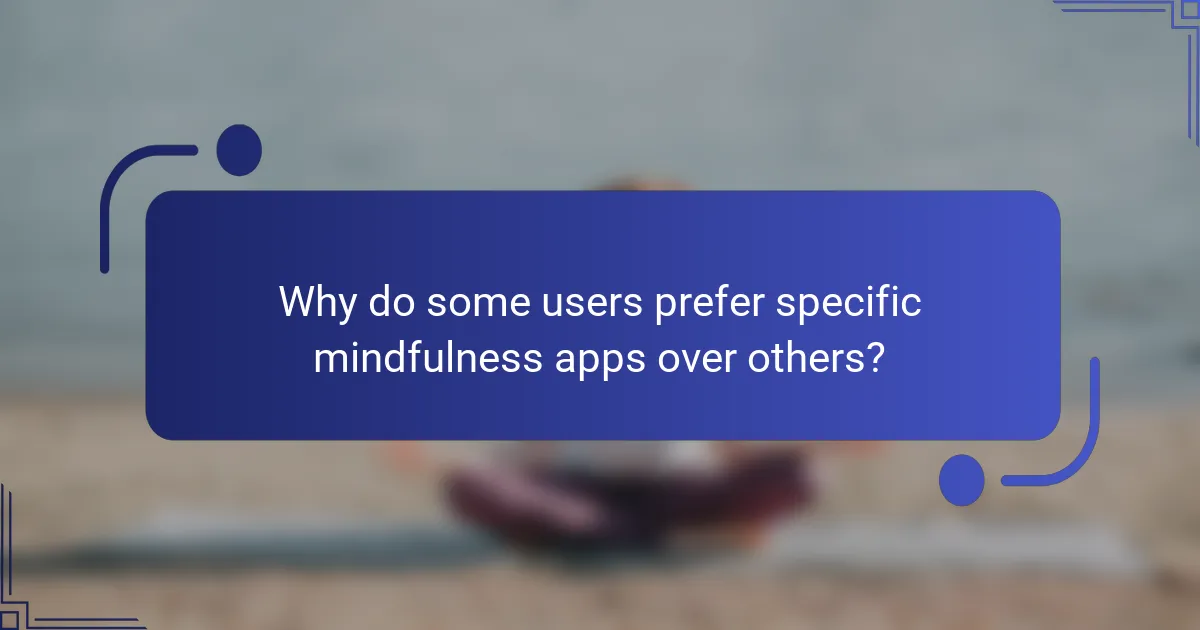
Why do some users prefer specific mindfulness apps over others?
Some users prefer specific mindfulness apps due to unique features, user experience, and effectiveness in promoting mental health. Personalization options allow users to tailor their practice, enhancing engagement. User-friendly interfaces improve accessibility, making meditation easier. Additionally, evidence-based practices in popular apps boost credibility and outcomes.
What factors influence user retention in mindfulness apps?
User retention in mindfulness apps is influenced by factors such as user engagement, personalization, and community support. High user engagement leads to consistent app usage and improved mental health outcomes. Personalization enhances user experience by tailoring content to individual needs. Community support fosters a sense of belonging, encouraging users to stay committed to their mindfulness practices. Regular updates and new features also play a role in maintaining user interest and satisfaction.
How do cultural differences shape the preferences for mindfulness app features?
Cultural differences significantly influence preferences for mindfulness app features. Users from collectivist cultures often prioritize community-based features, while individualistic cultures favour personalized content.
For example, Asian users may prefer guided meditations that emphasize group harmony, while Western users might seek customizable options that cater to personal goals. Additionally, language support and cultural relevance in content enhance user engagement across diverse demographics.
Understanding these preferences can help developers tailor mindfulness apps to meet varying needs, ultimately improving mental health and wellbeing outcomes.
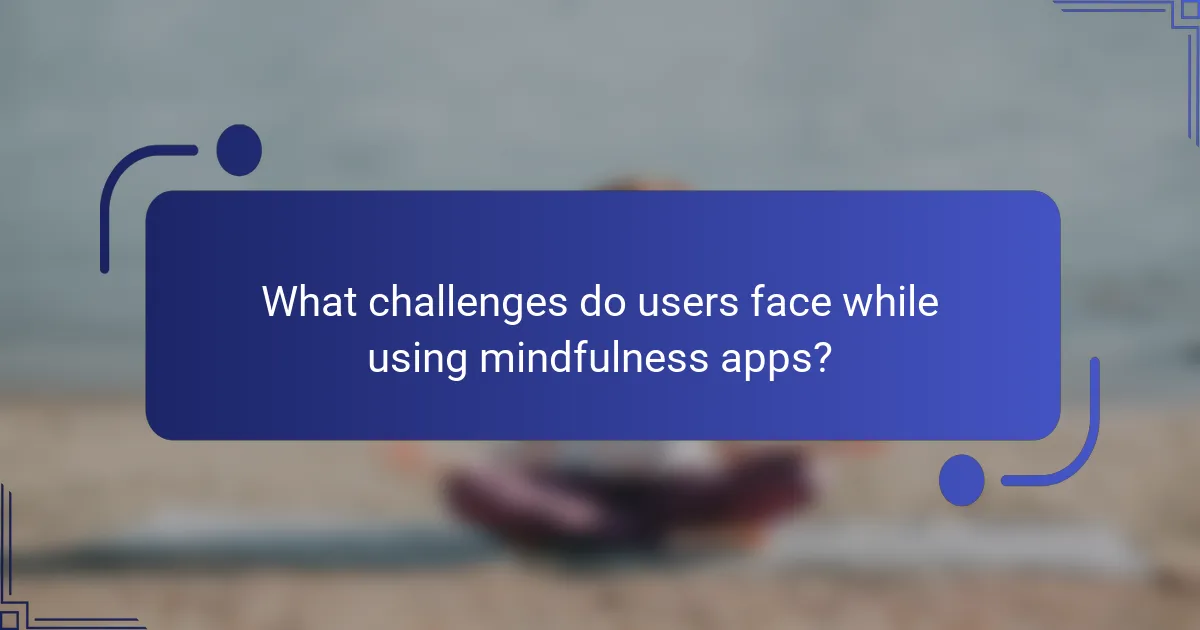
What challenges do users face while using mindfulness apps?
Users face several challenges while using mindfulness apps, including difficulty in maintaining consistency, overwhelming options, and lack of personalization. Many users struggle to integrate these apps into their daily routines, leading to sporadic usage. The abundance of features can create confusion, making it hard for users to choose the right practices for their needs. Additionally, some apps may not tailor content effectively, resulting in a disconnect between user expectations and actual experiences. These factors can hinder the overall effectiveness of mindfulness apps on mental health and wellbeing.
How can technical issues affect the user experience of mindfulness apps?
Technical issues can significantly disrupt the user experience of mindfulness apps by causing frustration and reducing engagement. Common problems include slow loading times, crashes, and navigation difficulties. These issues can lead to decreased user satisfaction and hinder the app’s effectiveness in promoting mental health and wellbeing. For instance, a study found that 70% of users abandon apps due to performance issues. Consequently, addressing technical flaws is essential for enhancing user retention and ensuring the intended benefits of mindfulness practices are achieved.
What common misconceptions about mindfulness apps hinder their usage?
Common misconceptions about mindfulness apps include beliefs that they are ineffective, overly simplistic, or only for experienced practitioners. These misconceptions hinder their usage by discouraging potential users from exploring the benefits of guided meditation and mental wellness techniques. Research indicates that regular use of mindfulness apps can significantly improve mental health and wellbeing, making it essential to address these misunderstandings. For instance, studies show that users report reduced anxiety and improved focus after consistent engagement with these applications.
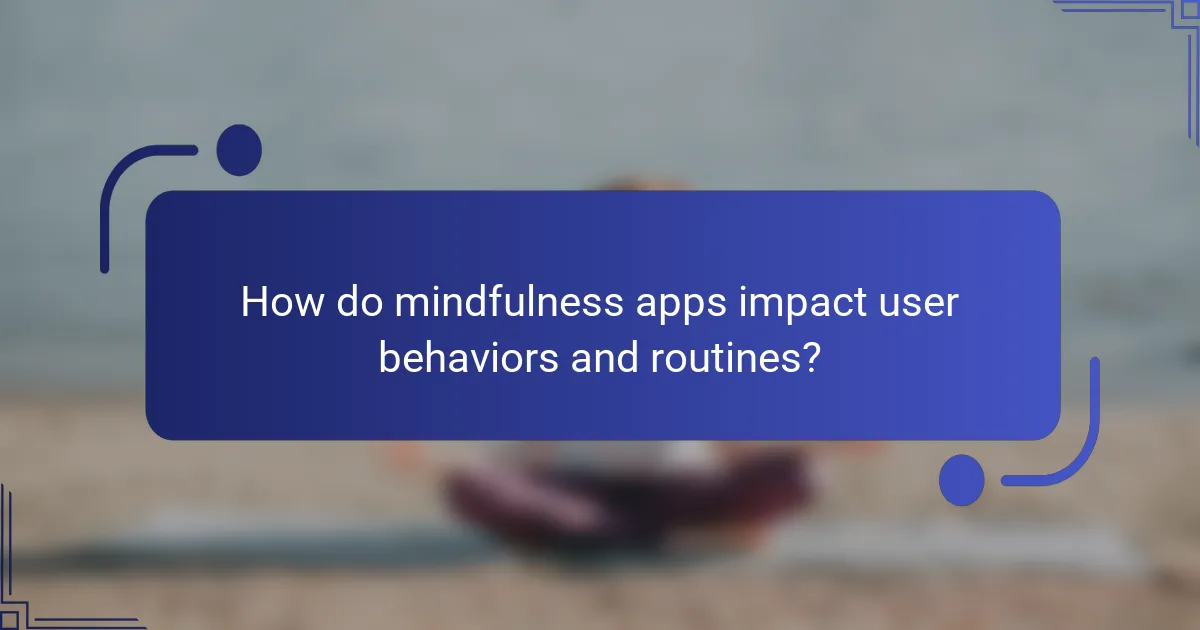
How do mindfulness apps impact user behaviors and routines?
Mindfulness apps significantly enhance user behaviors and routines by promoting consistent meditation practices. Users report improved focus, reduced stress, and better emotional regulation. A study indicated that regular use of mindfulness apps can lead to a 30% increase in daily mindfulness activities. These apps often include features such as guided meditations, reminders, and progress tracking, which help users integrate mindfulness into their daily lives. As a result, users develop healthier routines that prioritize mental well-being.
What trends are emerging in the usage of mindfulness apps among different demographics?
Mindfulness apps are increasingly popular across various demographics, with notable trends emerging. Younger users, particularly millennials and Gen Z, are engaging with these apps for stress management and mental health support. Older adults are also adopting mindfulness apps, focusing on relaxation and cognitive health.
Research indicates that women are more likely to use mindfulness apps than men, often seeking emotional well-being and self-care resources. Additionally, individuals from urban areas show higher usage rates compared to those in rural settings, likely due to greater access to technology and mental health resources.
The integration of personalized features, such as guided meditations and mood tracking, is appealing to diverse age groups. This trend highlights the unique attribute of adaptability in mindfulness apps, catering to specific user needs and preferences. Overall, the impact of mindfulness apps on mental health and well-being is becoming increasingly recognized across all demographic segments.
How do mindfulness apps integrate with other wellness practices?
Mindfulness apps enhance wellness practices by providing structured mental health support. They often integrate with meditation, yoga, and fitness routines, creating a holistic approach to wellbeing. For example, many apps offer guided meditations that complement physical activities, fostering mindfulness during exercise. As a result, users experience improved stress management and emotional regulation. Additionally, some apps feature community support elements, connecting users for shared experiences and encouragement, which further amplifies their positive impact on mental health.
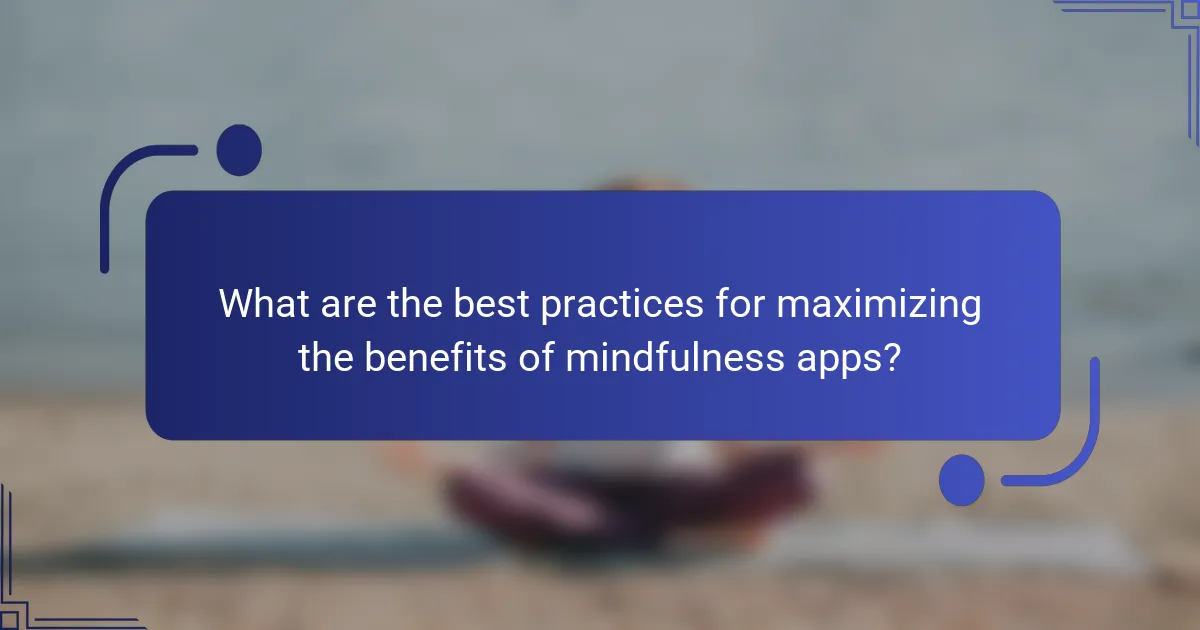
What are the best practices for maximizing the benefits of mindfulness apps?
To maximize the benefits of mindfulness apps, users should establish a consistent routine, set clear intentions, and engage with varied content. Regular practice enhances mental health and wellbeing by fostering resilience and reducing stress.
1. Set a daily time for mindfulness sessions to build a habit.
2. Define specific goals, such as reducing anxiety or improving focus.
3. Explore different features, like guided meditations or breathing exercises, to find what resonates.
4. Track progress to stay motivated and adjust practices as needed.
5. Engage with community features for support and shared experiences.
How can users effectively incorporate mindfulness apps into their daily routines?
Users can effectively incorporate mindfulness apps into their daily routines by setting specific times for practice, utilizing reminders, and integrating short sessions into existing activities. Establish a consistent schedule, such as morning or evening sessions, to enhance habit formation. Use app features like guided meditations or breathing exercises during breaks to promote mental clarity. Tracking progress can also motivate users to stay engaged. Mindfulness apps often provide unique features like personalized recommendations based on user preferences, which can enhance the overall experience and effectiveness.
What expert tips can enhance the mindfulness app experience?
To enhance the mindfulness app experience, users should focus on personalization, consistency, and community engagement. Personalizing sessions based on individual needs boosts effectiveness. Regular use fosters habit formation, essential for mental health benefits. Engaging with a community through forums or group sessions enhances motivation and accountability.
What common mistakes should users avoid when using mindfulness apps?
Users should avoid common mistakes such as not setting clear intentions, over-relying on app features, neglecting consistency, and failing to engage with community support.
Not setting clear intentions can lead to a lack of focus during mindfulness practices. Over-relying on app features may diminish the personal experience of mindfulness. Neglecting consistency undermines the potential benefits of regular practice. Lastly, failing to engage with community support can limit motivation and shared learning opportunities.


